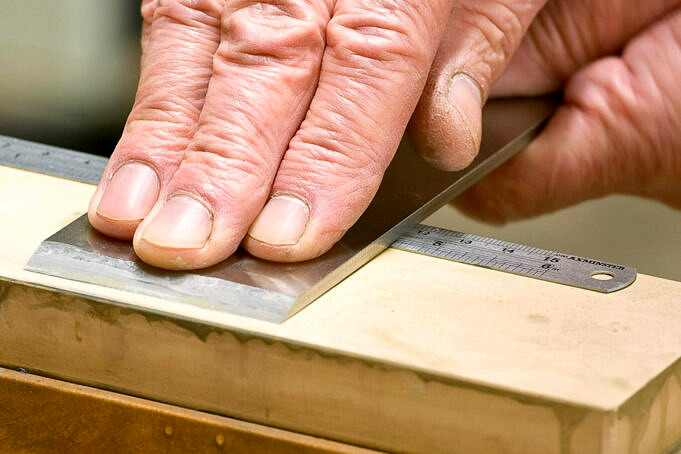Share it
One of the most familiarhand tools to most woodworkersis the plane. There are many types of planes but all work the same way. The bottom of the plane is a flat surface with a slot in it. The plane iron or blade extends through this slot just enough to allow the plane to shave small amounts of wood from a plank as the plane is pushed over its surface.To do good woodworking, the plane iron needs to be sharp.
To do a good job, the plane iron needs a razor-sharp edge. Tempered steel is used to make the plane iron. It will keep its edge for a long time. After a few uses, most plane irons will need to be sharpened. This is especially true if it is being used to plane a seasoned hardwood like oak. The process of sharpening the plane is easy once the iron has been removed.
The Sharpening Process
1. The End Of The Plane Iron That Is Sharpened Has A Bevel
The bevel on most planes comes pre-ground from the plane iron. This angle should be used if you have to make the bevel because of damage. A bench grinder can grind the bevel. It is possible to do this freehand, but if you have had an attachment for your grinder to hold the plane iron and set the angle, it is easier. Use a protractor to measure the angle for the correct pitch.
2. The Plane Iron Should Be Ground By Turning The Wheel Toward The Blade, With The Bevel Facing Up.
It is a good idea to wear safety goggles when grinding any steel.
To keep the iron from getting hot, it is a good idea for you to frequently dip it in water. If you are grinding the plane iron freehand, move it back and forth slowly over the grinding wheel. A small burr may form, but this will be removed during the next sharpening step.
3. For Final Sharpening, Use An Oilstone
The final sharpening can be done on any type of whetstone, but an oilstone is the easiest to use. The stone should be coated with an oil that is a mixture of one-half machine or shop oil and one-half kerosine. A few drops of oil should be enough to coat the stone’s surface. The plane iron should be pushed across the oilstone at an angle between thirty and thirty-five degrees. Keep the blade under constant downward pressure. Push and pull the blade along its length to achieve the best results.
4. After Several Strokes, Remove Any Burr On Either Side Of The Plane Iron
After six to ten trips on the oilstone, the blade should be finished. Turn the blade upside down and place it at the level of the oilstone. The burr against oilstone allows the blade to slide back and forth easily. A couple of trips should be sufficient to remove the excess metal.
5. The Plane Iron Needs To Be Tested For Sharpness Before Putting Back Into The Plane
There are two simple ways to see if the plane iron is sharp enough. First, hold the blade up with the bevel facing you and gently push it over your thumb. If the blade slides across your nail without catching, it’s not sharp enough. If you feel it bite into your nail, stop pushing. The blade is very sharp. Another method is to apply water to the hair on a small area of your arm or leg. Use the plane iron like a straight razor. It is ready to use if it cuts the hair. Put the plane iron back into the plane and get to work.



